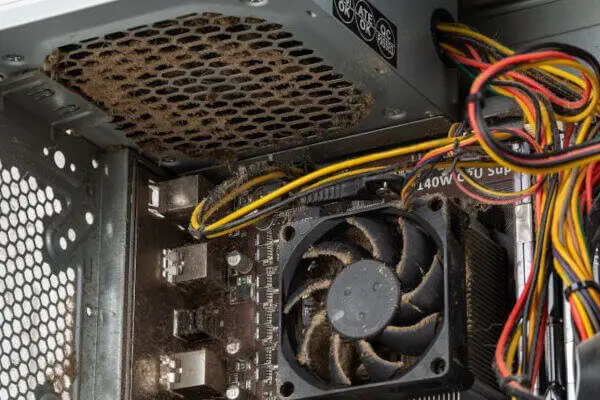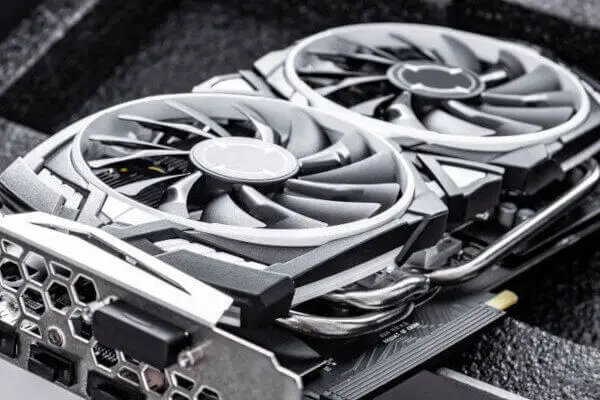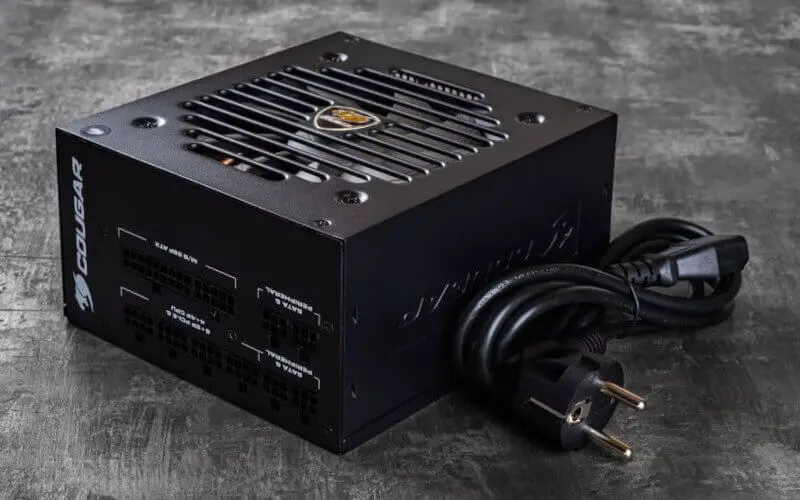Have you ever experienced your computer randomly shutting down or freezing up while working on something important or gaming?
It can be incredibly frustrating and often leads to a lot of head-scratching and confusion. One common culprit of these issues can be a failing power supply unit (PSU) or graphics processing unit (GPU).
These components are essential for your computer’s overall performance, but unfortunately, they can wear out and fail over time. That’s why it’s important to recognize the signs of failure and take steps to diagnose and address the issue before it causes more serious problems.
In this article, I’ll go over some common signs of PSU and GPU failure and offer some tips on troubleshooting and diagnosing the issue.
Signs of a Failing PSU

One sign that your power supply unit (PSU) may fail is if your computer randomly shuts down or reboots, even when you’re not doing anything, particularly demanding. This can be especially frustrating if you’re in the middle of an important project or gaming session.
Another indication of a failing PSU is if your computer fails to power on at all or powers on briefly and then shuts off. In some cases, you might also notice strange noises from the PSU, such as clicking or buzzing sounds.
Finally, suppose you smell burning or notice smoke coming from the PSU. In that case, you should immediately shut down your computer and seek professional help, which could indicate a serious safety issue.
If you’re experiencing any of these symptoms, it’s a good idea to troubleshoot your PSU to see if it’s the cause of the problem. One way to do this is to test the voltage with a multimeter, which can help determine if the PSU provides the correct power to your computer’s components.
Related: Power Supply Green Light But Computer Won’t Turn On
Signs of a Failing GPU

If you’re experiencing issues with your computer’s graphics, such as artifacts or distorted images on the screen, this could be a sign of a failing graphics processing unit (GPU).
Another indication of GPU failure is if your screen flickers or freezes, especially when doing something graphically intensive like gaming or video editing. Sometimes, your computer might crash or freeze when using certain programs or applications.
These symptoms can be frustrating and, in some cases, may even cause you to lose important work. If you suspect that your GPU is the culprit, there are a few things you can do to troubleshoot the issue.
For example, you might try updating your GPU drivers, which can help ensure that your computer uses the most up-to-date software for your graphics card. You might also check to see if your GPU is overheating, which can cause performance issues and potentially damage your components over time.
Whatever the cause of your GPU issues, it’s important to address them sooner rather than later to avoid further problems.
Related: How to Fix GPU Overheating
How to Diagnose PSU or GPU Failure
If you’re experiencing issues with your computer’s power supply unit (PSU) or graphics processing unit (GPU), it can be difficult to determine which one is the root of the problem. Fortunately, you can do a few things to help diagnose the issue.
One thing you might try is using software to stress test your GPU. This can help you determine if the GPU is performing as it should and whether it’s experiencing any issues that could be causing your symptoms. There are several free programs available that can help you do this, such as FurMark or 3DMark.
Another option is to swap out the PSU or GPU with a known working component if you have one available. This can help you determine whether the issue is with the component or another part of your system.
Just be sure to take appropriate safety precautions when working with computer components and follow manufacturer instructions for installation or removal.
If you’re still having trouble determining the cause of your issues, it may be a good idea to seek professional help. A qualified computer technician can help diagnose and repair any issues with your PSU or GPU and can ensure that your computer is running at its best.
Ultimately, being proactive and tending to issues before they become severe is the key to success. To prevent potential disasters, address any problems immediately upon noticing them.
Conclusion
If you’re experiencing issues with your computer’s power supply unit (PSU) or graphics processing unit (GPU), it’s important to know the signs of failure and how to diagnose it. Some common signs of PSU failure include random shutdowns, failure to power on, and strange noises or smells.
Signs of GPU failure may include artifacts, screen flickering or freezing, and crashes or freezes. To diagnose the issue, you might try stress-testing your GPU with software or swapping out the PSU or GPU with a known working component. If you’re still having trouble, it may be a good idea to seek professional help.
Remember, the key is to be proactive and address any issues as soon as you notice them, to avoid potentially more serious problems. With these tips and a little know-how, you can help keep your computer running smoothly and efficiently for years.






